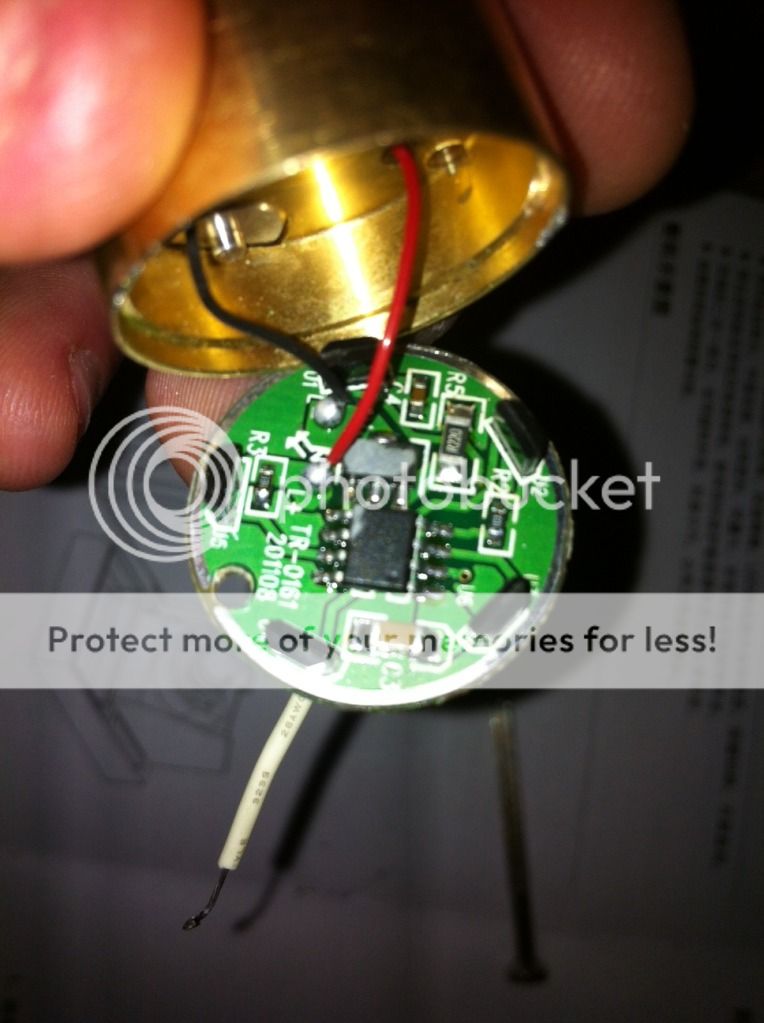You would need to remove the tail cap and use an amp meter to measure current between the battery and the light's case. So get a multi meter and set it up to measure amps. Touch one of the leads to the back side of the battery and one to the flash light's barrel where it does not have anodizing. The light should turn on (once the switch is turned on) and the meter should show amps.
Now that you put it like that it indeed seems perfectly logical. Thanks for that.
Just got the batteries on charging to full now and I'll run some tests.
Moving on to some other observations.
It indeed seems that consistency during manufacture/assembly is not high on the list. Between Doc Ed's example and my two I am seeing some differences.
One point between my two when breaking them down was the difference that one had quite a lot of aluminium and plastic shavings from the machining process and quite an excess amount of silicone grease over almost every surface. The other was quite free of shavings and with a much more reasonable amount of greasing.
Then there was the o-rings.... Doc Ed mentions having only one at the light head end (plus the friction ring). This differed between my two. One came with only one and the other with two:
Also I think that between both lights and a total of 7 of the black o-rings all of them have some small amount of damage to them. This is leaving me somewhat sceptical as to whether they will in fact do their job. All o-rings are super soft also which I am a touch sceptical of...not sure how they will handle pressure. (feel free to comment for or against that train of thought). All in all starting to think that switching out o-rings could be a smart move.
@ Doc Ed: I know you pot tested yours to 65m. Was this using all the original o-rings? Did you notice any damage to any of yours when you received it?
Also a +1 to Doc Ed's idea of a dot of glue or something on the little magnet for switching mechanism. They do indeed fall out quite easily. Currently I have just dabbed a little silicone grease on the bottom of it
Over all though I am still quite impressed with these little lights. Will be interesting to see the current draw results soon.
Cheers,
Joel
P.S. Note to self (and others) threads on tail cap end are rather sharp, got a nice little slice on my thumb from it
 But something to be aware of I guess when placing o-rings back in place. More meaning being aware or not slicing the o-rings......
But something to be aware of I guess when placing o-rings back in place. More meaning being aware or not slicing the o-rings......
Last edited:


